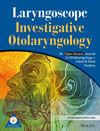The pathophysiology of dysphagia post-lung transplant: A systematic review
Abstract
Purpose
One major consequence of lung transplantation is the development of oropharyngeal dysphagia. This systematic review aims to appraise and synthesize the available evidence of the use of instrumental assessments to outline the characteristics of post-lung transplant dysphagia.
Methods
Following the identification of appropriate search terms for the question, a literature search was conducted in PubMed, Scopus, and the Health and Medical Collection of Proquest Research Library and included records between inception and September 14, 2023. Search strategies included the use of text words and subject headings (e.g., MeSH and Index terms) related to (1) dysphagia or swallowing (swallow*, deglutition disorder*), (2) lung transplant (lung transplant*, post-operative, post-lung), and (3) complications (adverse effects, *complications, treatment outcome).
Results
The literature search strategy yielded a total of 883 studies from the electronic database search, with no additional records identified through other sources. After the removal of duplicates (n = 96), a total of 787 studies were screened through title and abstracts which eliminated 775 studies. Six studies were ultimately included in the systematic review. The selected articles included patients who underwent lung transplantation and all but one study utilized a retrospective design. A lack of transparency regarding instrumental evaluation protocols (videofluoroscopic [VFSS] and Flexible Endoscopic Evaluation of Swallowing [FEES]) including the number and bolus types used during the instrumental evaluations appeared as a theme in the studies included. The Penetration-Aspiration Scale (PAS) was systematically utilized to measure dysphagia safety outcome. Handling of the PAS scale was not consistent across studies, however penetration or aspiration ranged from 52.4% up to 100%. Additionally, silent aspiration rates ranged from 14.2% to 61.9%.
Conclusions
This review sought to describe the post-operative swallowing function and its physiological parameters following lung transplantation. We examined the results reported and the methods utilized in obtaining these results in the existing literature. Limited reporting practices for physiological parameters were found, however the airway invasion was reported in all studies with variation in degrees of swallowing safety related deficits, with PAS being the most widely used scale to describe airway invasion depth and response. Future studies exploring dysphagia outcomes post-lung transplant should comment on the altered physiological mechanisms of the swallow to further expand on the physiological deficits observed following transplantation in this group and allow for treatment planning.
Level of evidence
Level 1.


 求助内容:
求助内容: 应助结果提醒方式:
应助结果提醒方式:


